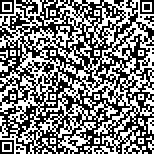本文已被:浏览 469次 下载 73次
Received:February 19, 2024 Published Online:November 20, 2024
Received:February 19, 2024 Published Online:November 20, 2024
中文摘要: 目的 分析多学科协作护理联合正念减压对乳腺癌根治术患者术后的影响。方法 将2021年7月至2022年9月南京医科大学第四附属医院采取常规护理的43例乳腺癌根治术患者纳入对照组,另将2022年10月至2023年12月采取多学科协作护理联合正念减压的43例乳腺癌根治术患者纳入观察组。两组均连续干预8周。比较两组干预前、干预4周与干预8周的自我效能、焦虑抑郁情况、压力、肩关节活动度;患者乳腺癌根治术后自我效能评分与焦虑、抑郁、压力评分及肩关节活动度的关系采用Pearson相关性分析。结果 干预8周,两组自我效能评分高于干预4周及干预前,且观察组高于对照组(P<0.05);两组焦虑、抑郁、压力评分低于干预4周及干预前,且观察组低于对照组(P<0.05);两组肩关节前屈、外展、内收、后伸角度活动度角度的活动度大于干预4周及干预前,且观察组大于对照组(P<0.05)。Pearson相关性分析显示,患者乳腺癌根治术后自我效能评分与焦虑、抑郁、压力评分呈负相关(r=-0.335、-0.389、-0.359,P<0.05);自我效能评分与肩关节前屈、外展、内收、后伸角度活动度呈正相关(r=0.239、0.229、0.215、0.289,P<0.05)。结论 多学科协作护理联合正念减压可以有效提高乳腺癌根治术患者术后自我效能,改善肩关节活动度,缓解负性情绪。
Abstract:Objective To analyze the effect of multidisciplinary collaborative nursing combined with mindfulness decompression on self-efficacy, shoulder joint range of motion and negative emotions of patients after radical surgery for breast cancer. Methods From July 2021 to September 2022, 43 patients with breast cancer undergoing radical mastectomy who received routine care in the hospital were included in the control group; In addition, 43 patients with breast cancer undergoing radical mastectomy who received multidisciplinary collaborative nursing and mindfulness decompression from October 2022 to December 2023 were included in the observation group. Both groups received continuous intervention for 8 weeks. Compare self-efficacy (GSES), anxiety and depression (SAS, SDS), perceived stress (CPSS), and shoulder range of motion before and after 8 weeks of intervention between two groups. The relationship between GSES score and SAS, SDS, CPSS score, and shoulder range of motion after breast cancer radical surgery was analyzed by bivariate Pearson analysis. Results After 8 weeks of intervention, the GSES scores of the two groups were higher than those of the intervention group at 4 weeks and before intervention, while the observation group was higher than the control group (P<0.05). The SAS, SDS, and CPSS scores of the two groups were lower than those of the intervention group at 4 weeks and before intervention, while the observation group was lower than the control group (P<0.05). The activity of flexion, abduction, adduction, and extension angles in the two groups was greater than that before the intervention for 4 weeks, and the observation group was greater than the control group (P<0.05). The bivariate Pearson analysis showed that the GSES score of patients with breast cancer after radical surgery was negatively correlated with SAS, SDS and CPSS scores (r=-0.335, -0.389, -0.359; P<0.05).The GSES score is positively correlated with the activity of flexion, abduction, adduction, and extension angles (r=0.239, 0.229, 0.215, 0.289; P<0.05). Conclusion Multidisciplinary collaborative nursing combined with mindfulness decompression can effectively improve the self-efficacy of breast cancer patients after radical surgery, improve shoulder joint mobility, and alleviate negative emotions.
keywords: Breast cancer Radical mastectomy Multidisciplinary collaborative nursing Mindfulness decompression Self efficacy Shoulder joint range of motion Negative emotions
文章编号: 中图分类号:R473.5 文献标志码:B
基金项目:
| Author Name | Affiliation |
| YAN Ying, LI Shiyan | Department of General Surgery, The Fourth Affiliated Hospital of Nanjing Medical University, Nanjing, Jiangsu 210031, China |
| Author Name | Affiliation |
| YAN Ying, LI Shiyan | Department of General Surgery, The Fourth Affiliated Hospital of Nanjing Medical University, Nanjing, Jiangsu 210031, China |
引用文本:
